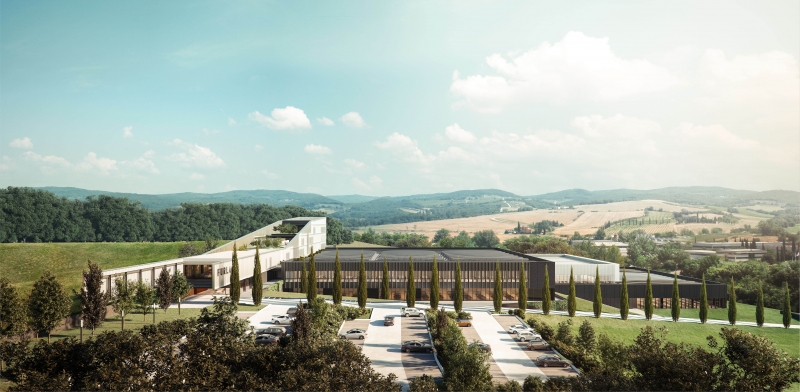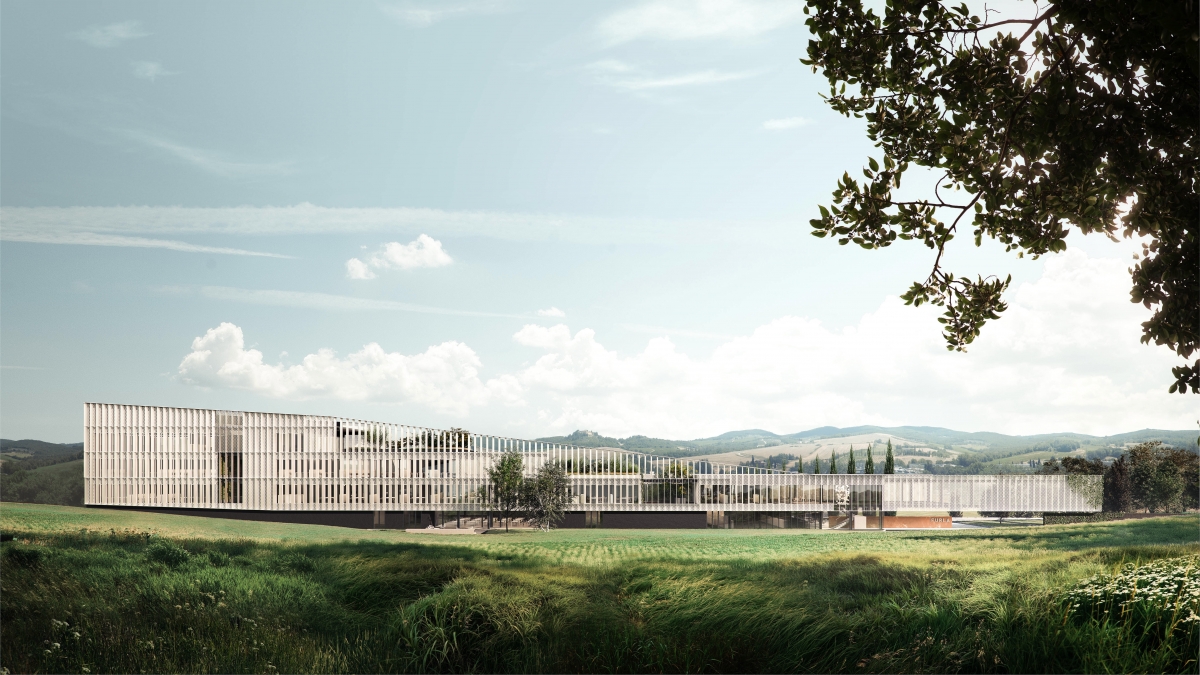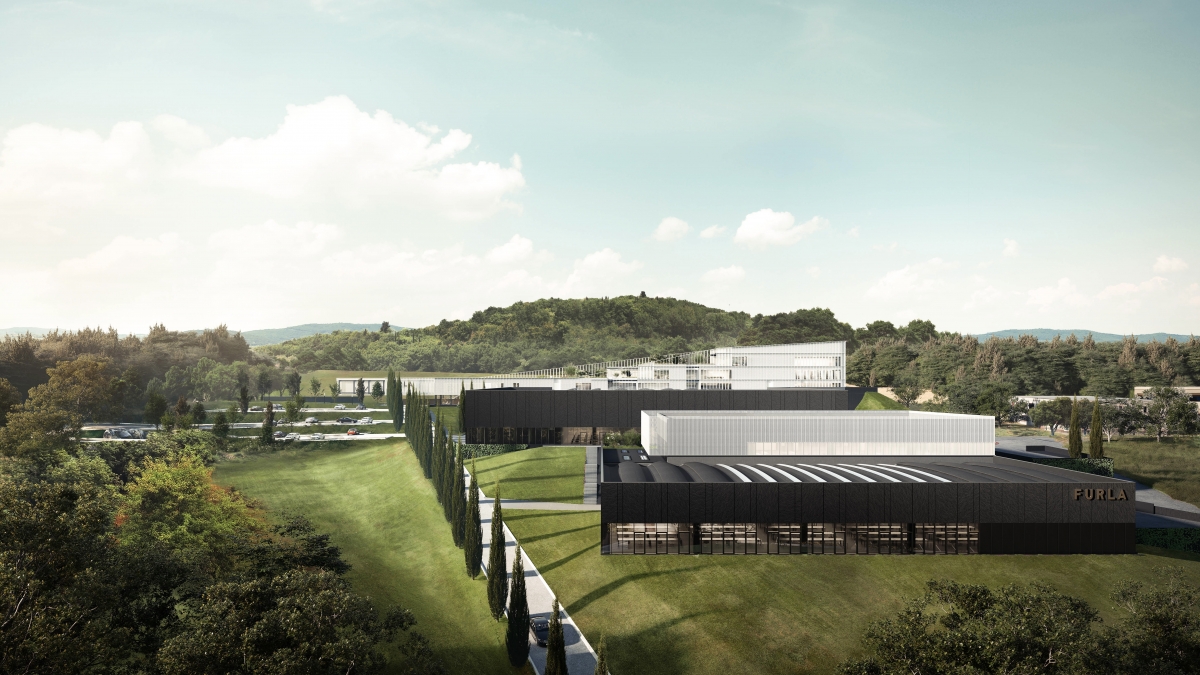

Furla Progetto Italia, A new creativity and research hub
23 Jun 2021
Proud of its DNA and of its unparalleled heritage in the world of leather goods, Furla develops an ambitious project aimed at exalting its Italian manufacturing legacy while creating a profound link with the most beautiful and untouched natural landscape.
A hub for creativity, production, research, experimentation and education, Furla Progetto Italia is Furla’s new complex located in the heart of the Chianti area, at Tavernelle Val di Pesa (Florence), where Effeuno S.r.l., the manufacturing platform that Furla acquired in 2018, is already located.
Spanning over a surface of 43,000-square-meter, of which 18,200 mq built, Furla Progetto Italia, conceived by Udine’s Geza studio, winner in 2019 and in 2017 of the American Architecture Prize (Architectural Design / Industrial Buildings category) and of the Architizer A+Awards Prize (Glazing Systems & Product category). creates a new, innovative and harmonious relationship between industrial architecture and nature, resulting in an environment celebrating individuals’ well being in the workspace.
Featuring three main wings, dedicated to offices, manufacturing laboratories and logistics, the hub, that winds around the iconic Furla square, blends in with the natural surrounding thanks to the different heights of the building reflecting the geological conformation of the area, and thanks to the wide range of patios and green roofs, blending the boundaries between indoor and outdoor. In addition, Tuscany’s great architectural tradition is celebrated through the perfect row of cypress-trees welcoming visitors at the entrance, like in the local traditional villas.
Furla Progetto Italia, which will become the heart of Furla’s manufacturing and creative supply chain, will house 130 employees who will have the chance to express their creativity and their artisanal skills in a highly stimulating environment, which combines the respect of traditions with a new desire for high-tech innovation and artistic experimentation.
“Furla Progetto Italia is the first step towards the Furla of the future, a company that looks ahead without forgetting to exalt its legacy and its DNA. Furla Progetto Italia is a hub for experimentation where we can attract and train new talents. It has an agile and dynamic structure where art, creativity and craftsmanship meet and cross-pollinate within an environment rooted in environmental sustainability. This significant investment that the company is making in Italy for Italy will enable us to reinforce our creativity to conceive, develop and manufacture more and more innovative and relevant products targeting different generations and markets. At the same, we will be able to reinforce our manufacturing capacity, bringing in house the most delicate production processes,” states Furla Group Chief Executive Officer Mauro Sabatini.
The new hub will also house the “Furla Academy”, a training program established in 2018 in partnership with ITS Mita with the goal of spreading and passing down the company’s incredible know-how, offering young artisans an education path combining academic studies, practical courses and classes to offer them a complete understanding of the whole production cycle, from sampling to pattern making. The main objective is to guarantee students the chance to acquire those specific technical competences to be integrated into Furla’s workforce.
In keeping with the company’s continuous commitment towards social and environmental responsibility, Furla Progetto Italia has been developed with a holistic approach, aimed at minimizing the impact of the industrial activities on the area. In order to guarantee significant energy saving, the manufacturing plant will be powered by a photovoltaic system and by thermal solar panels for the production of hot water, while a LED-based system will provide lightening. In addition, the facades of the manufacturing buildings have been treated with the innovative “smog-eating” Airlite paint, that purifies the air and transforms pollutants into salt molecules. A square-meter of this paint has the same purifying effect of a square-meter of woods. The complex also features a system collecting rainwater, which is used to water the gardens and the green areas.


